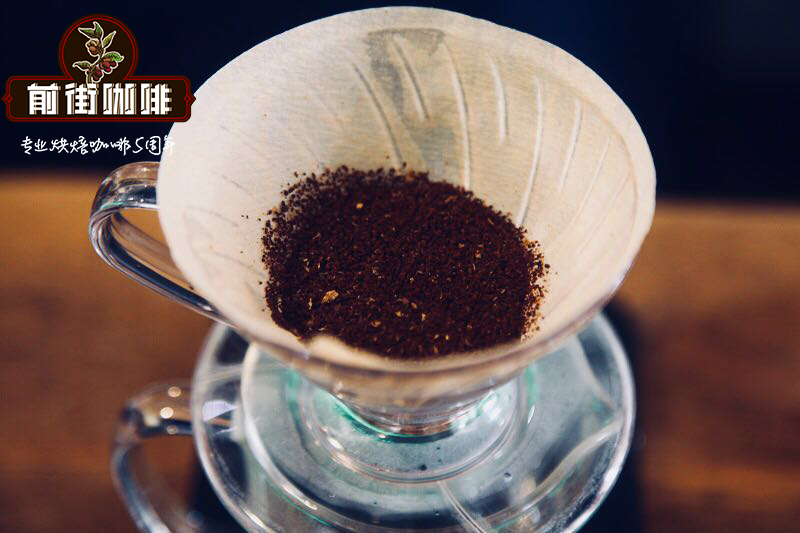Hand grinder grinding degree correction skills sharing Manual coffee grinder can also be very professional

Professional coffee knowledge exchange more coffee bean information please follow the coffee workshop (Wechat official account cafe_style)
Degree of grinding _ coffee grinding thickness _ coffee grinding scale
Correction skills of grinding degree in hand grinding
Recently, the editor chatted with his classmates in the sharing meeting.
It is found that many people use hand grinding, but many people are confused about whether the grinding degree they use is correct or not.
In fact, this will have a great impact on cooking, because the degree of grinding is the largest variable affecting the extraction rate.
If the degree of grinding is not fixed + will not be adjusted, basically good flushing is equivalent to relying on luck!
Then in the end how to adjust the grinding degree of the hand mill?
Let the editor tell you step by step.
Before adjustment, it is recommended to take apart the hand mill, clean it well and thoroughly, and remove all the residual beans.
The editor's Rhinowares mini rhino hand mill is a removable ceramic cutter head, so I just wash it in the water and then dry it.
In addition, there are two tools to help us adjust:
1. Likebai or any tool that can be marked on the cutter head
two。 The usual ground coffee powder (if you don't have an electric mill, you can go to the familiar cafe to borrow some, you should be willing to do so)
Next, insert the outer cutter head into the fuselage of the bean grinder and make sure that the cutter head is fixed in the tenon of the fuselage.
Next, put the inside cutter head in.
Finally, lock the Mercedes-Benz screw to adjust the grinding degree, and complete the combination of the cutter head.
Note that the front and back of the Mercedes-Benz screw should be installed correctly, usually there will be a section of joint when the correct side rotates (easy to adjust and use)
Just installed, you can see the gap between the cutterhead is very large, slowly turn the Mercedes-Benz screw to the tightest.
Until the gap is completely closed and no further rotation can be made.
Don't turn your life to death, don't turn it if it's almost stuck, or the knife head will break.
The cutter head is completely closed, and this is the initial position = degree of grinding # 0
According to reason, every turn will be in the same position, but sometimes the knife head gets stuck or powder.
It may not be pushed to the same position, and you can't wash the cutter head every time you have to adjust it.
So we're going to use Likebai Jun to mark us.
First choose any corner of the Mercedes-Benz screw as the reference point, on which you can make a small mark.
Of course, there should also be a white spot on the cutter head (I only order the inside cutter head, if you are afraid of not matching, you can also add some outside cutterhead)
From then on, the confluence of the two white points is the initial position of the degree of grinding = # 0.
Let the smell of Likebai go away by ventilating after the order.
Don't worry that Likebai will affect your grinding flavor.
Because the point is on the back of the cutter head, it will not pollute the coffee powder you grind.
Likebai is basically resistant to washing, so you don't have to do it again the next time you clean it!
With the initial position, everything will be easy.
First look at the relative position of two white spots + understand the way to record the degree of grinding.
Two white spots converge again = 360 degrees = # 1 circle
The difference between the two white dots in the picture is 120 degrees = # 1 stroke 3 circles.
The two white spots in the picture are diagonally = 180 degrees = # 1ax 2 circles.
From then on, you can accurately record the degree of grinding you use every time.
And adjust the coarse and fine according to your cooking condition, this part is the same as the electric bean grinder.
When the mark is done, the next step is to test your own standard grinding degree of hand mill.
I first turn # 1 and 1 stroke 3 laps (the number of laps of each hand mill is different, catch the approximate value by myself)
Then throw a few beans for the test.
Start grinding, and the beans will be ready in a few seconds.
If there is an electric bean grinder for reference, it can accelerate the correction of hand grinding degree.
It is best to have an electric bean grinder at home. If not, ask a familiar cafe to grind 5g, which will be much more convenient.
On the left side are the particles of my usual little Fuji flat knife # 3.5.
On the other side are the particles of hand mill # 1 and 1 and 3 circles.
Visually, it felt that the particles of the hand mill were a little thicker, so I adjusted the size of the grinder to 1 lap and 6 laps.
Now on the right are the particles from the hand mill # 1 and 1 hand 6 laps.
The visual feeling seems to be similar, so this is used as the standard data for the time being.
However, the particle shape, average bean diameter and the amount of fine powder are different between electric mill and hand mill.
Therefore, it is necessary to try the actual cooking in order to determine the final grinding degree.
Next, the actual cooking is carried out, and 20g beans are ground first.
Because the editor's hand mill is mainly used when taking it out.
So the filter cup used in today's test is, of course, the most commonly used outdoor artifact used by editors.
Can be folded into a triangular filter cup with the thickness of a leisurely card.
Match with a small and waterproof smart scale
The next pot is nomad's lovely + unbreakable enamel cup.
When I see this equipment, I know I'm ready to go camping.
Just now, the weighing bean was 20g, and the ground powder was 19.8g.
0.2g of residual powder seems quite acceptable.
When we start, we will not take special pictures in the process of brewing and cooking, but come to the conclusion directly.
The water absorption of beans is a little slower + the flow rate is also slow as a whole.
There will still be flooding when small water column is injected.
The concentration is too high and the bitter taste is obvious.
It is conceivable that the wear is slightly finer and needs to be fine-tuned, but not too much, just a little.
In the second round, the test is adjusted to 1 beat 6 laps, and back to # 1 1pm 3 laps.
That is, the degree of grinding that was visually felt to be a little thicker.
# 1 and 1, the water absorption of the lapping degree of 3 laps is normal.
The overall flow rate was also quite fast, and I finished cooking in about 2 minutes.
And it tastes sour and clear with distinct layers, this is the degree of grinding I want.
But the taste is slightly full-bodied, and it is speculated that the proportion of fine powder is higher than that of Fuji.
Next time I will not investigate the grinding degree, just pull the gouache a little higher to make it refreshing.
It can be seen that the particle states are different with different bean grinders.
Visual observation alone is not so accurate, or you have to actually cook it.
And make small adjustments according to different bean grinders in order to make the flavor present perfectly.
The hand grinder is convenient and easy to use, but don't forget to pay attention to the degree of grinding.
Do a good record + time correction and adjustment, so that he can play the maximum value!
(end)
Brief introduction of several grinding degrees of Starbucks coffee beans
Important Notice :
前街咖啡 FrontStreet Coffee has moved to new addredd:
FrontStreet Coffee Address: 315,Donghua East Road,GuangZhou
Tel:020 38364473
- Prev

Coffee grindness, which is often neglected, is very important! An invisible killer who affects the flavor and taste of coffee
Professional coffee knowledge exchange more coffee bean information please pay attention to coffee workshop (Wechat official account cafe_style) grind degree _ coffee grinding thickness _ coffee grinding scale there are many factors that make a good cup of coffee, however, the grinding degree of coffee beans is most often ignored by everyone! If there are no people who have no research on coffee, when they receive a packet of free beans, many people will be straight.
- Next

Is black coffee Long Black or Black Coffee in English? The difference from Americano
For more information on coffee beans, please follow the coffee workshop (Wechat official account cafe_style) Black Coffee Long Black (or American Coffee Americano) LB LB Black Coffee Long Black or American Coffee Americano is a cup of coffee without milk. Basically, black coffee is milk-free, suitable for lactose intolerance or dislike.
Related
- What is the Philharmonic pressure? How to use Philharmonic pressure to make delicious coffee
- Why does a hand grinder have more fine powder than an electric grinder?
- In addition to the hot mom, what is the difference between the versions of EK43 | ditting and Mahdi ek43?
- What kind of equipment do you need to make coffee by hand? Introduction to novice starter cooking equipment tools
- Espresso needs to be ground how thick and thin scale entry Italian Coffee Machine Bean Grinder investigation and Grinding course
- How much does it cost to open a small private cafe? How much does it cost to learn coffee? How to operate it?
- The difference between the flavor characteristics of hand-brewed coffee and coffee maker is hand-brewed coffee really better than coffee maker? Can I use a coffee machine to make coffee beans by hand?
- The difference between 01 and 02 of hario v60 filter cup what is the difference between 01 and 02 filter cup opening and cooking flavor
- What's the difference between the smart cup and the French kettle? Which is better, the French kettle or the Smart Cup?
- What's the difference between a smart cup and a V60 filter cup? The difference between the taste of smart cup and hand-brewed coffee

